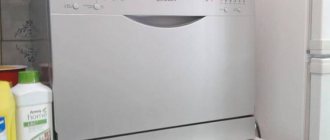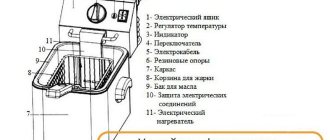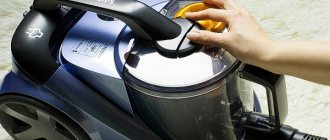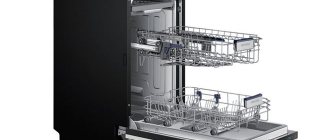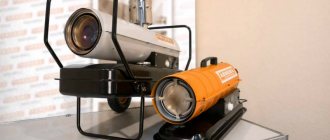When purchasing a new home or carrying out major renovations to an existing one, everyone wants to do everything in a design that is original and at the same time practical. It is impossible to achieve both one and the other without the use of nanotechnology. After all, only fashionable new equipment has both a magnificent appearance and extensive functionality. One of these modern attributes in kitchen furniture is the glass-ceramic stove. Let's try to determine the pros and cons and find out: is this a really stylish, practical thing or just a whim of the rich? Or maybe the costs of modernity? Or is it still a necessity that alleviates a woman’s lot?
Advantages
Among the advantages are noted:
- Supports instant heating function.
- Resistance to high temperatures.
- A high-quality stove with a glass-ceramic surface is characterized by low horizontal thermal conductivity and relatively high vertical thermal conductivity.
- High strength.
- Low power consumption compared to stoves that run on gas. Experienced users consider a glass-ceramic stove as a saving tool. Today, gas tariffs are rising every day, so electricity consumption will be cheaper.
- The glass ceramic coating cools quickly. This allows for a dynamic response to changes in switch position. Until recently, this was characteristic only of gas surfaces.
- Selecting a heating zone. You can regulate the heated area yourself. This allows you to use dishes with different diameters.
- Possibility of using dishes of specific shapes. Depending on the model of the glass-ceramic stove, the shape of the burners can be not only round, designed for dishes with a round bottom, but also other shapes that make it possible to use a caterpillar, as well as vessels of various configurations.
- Advanced functionality. If previously the main purpose of the stove was cooking, now there is a timer function, automatic shutdown when boiling, auto-cooking mode and others. All this makes the housewife’s work easier and does not require her full participation.
- Child protection. Another feature of modern models of glass-ceramic stoves that allows you to prevent children from accessing the unit’s navigation and avoid various kinds of troubles.
Glass ceramic hob: pros and cons
The advantages include the following features:
Thermal conductivity
When using glass-ceramic stoves, the time for boiling water is significantly reduced. When turned on, it warms up instantly and cools down quickly. This provides a high level of safety if there are small children in the room. During cooking, only the burner will warm up.
There are several types of heating depending on the heating element - rapid, halogen or induction. The most advanced technology is induction heating, which occurs due to a magnetic field. With induction heating, the pots or pans come into precise contact with the burner.
Saving
Minimal heating costs make such equipment economical in terms of energy consumption. The heating zone or burner is regulated by heating circuits, so during cooking, heat will flow only to the surface of the bottom of the cookware, and electricity will be used for its intended purpose.
Flaws
The glass-ceramic stove has pros and cons. The latter, according to owner reviews, include:
- The need to purchase dishes from certain materials. Depending on the type of burners (standard, induction, Hi-light, halogen) you can use one or another cookware on the stove.
- Specifics of care. A glass ceramic hob requires special care. Cleaning the surface must be done with a special tool using appropriate household chemicals, which usually cost a lot.
- Strong static loads are contraindicated.
- Precision strikes are contraindicated.
- Low sides. This means that if, for example, soup or milk escaped during the cooking process, then you will have to catch it on the floor. Consequently, not only the working hob, but also the floor will be contaminated.
- "Diabetes". The glass-ceramic stove is very afraid of sugar, both in its pure form and in liquids (jam, jam, syrup, etc.). It is almost impossible to clean burnt residue.
- Sudden temperature changes are contraindicated. When the stove is in operating mode, that is, turned on, you should avoid getting cold liquid on it. If this happens once, there is no need to worry, but if this happens systematically, it will soon cause the slab to fail.
Analyzing the above, we can conclude that the disadvantages of glass-ceramic stoves are the complexity of operation and the need for maintenance. In this aspect, traditional electric stoves benefit, of course. But such a drawback is nothing compared to the performance characteristics.
Glass ceramics or tempered glass - which is stronger?
customary to use tempered glass in electrical panels , and there is a logical explanation for this. It lies in the fact that the maximum permissible heating temperature of such a material is significantly lower than the indicator to which the slab material will be heated during its operation. Even electric burners can get very hot.
Tempered glass hobs are almost always gas-only
Compared to tempered glass, glass-ceramics can withstand twice as much as the previous one. So the range can reach up to 750°C. This is one of the main advantages of using this material. However, in combination with gas stoves, this advantage is lost, since during operation it is not the ceramics or glass that will heat up, but the burner itself. It will be located above the surface of the material, so any of the above materials will be able to withstand the operating temperature.
Their mechanical strength indicators are very close, however, glass ceramics are slightly ahead of tempered glass. In this case, unlike tempered glass, ceramics will break into regular sharp pieces. Tempered glass if damaged significantly will become cracked (like on a car windshield).
Broken glass ceramic hob
Which utensils can be used and which cannot?
A glass-ceramic stove requires a special selection of cookware. The pros and cons of this criterion, which must be observed according to the operating rules, converge. So, purchasing new cookware is primarily costly from a financial point of view. But if you buy the right utensils, you will be guaranteed a quick cooking process and a long service life of the stove.
Features of choosing dishes
- Smooth, undeformed bottom.
- The diameter of the bottom of the pot or frying pan must match the diameter of the burner.
- Aluminum and copper utensils cannot be used. Some manufacturers of hob surfaces overlook this issue, but in practice it has already been proven that the use of pots, pans and kettles made of these materials can lead to the appearance of pearlescent stains on glass ceramics, which in most cases cannot be washed off.
- If the hob is equipped with induction-type burners, then the cookware should be steel, enameled or cast iron. The use of utensils made from other materials is strictly prohibited. In addition, the bottom of the cookware for induction cookers must have ferromagnetic properties. Checking their presence is very simple - just place a magnet at the bottom of the container. If it is attracted, it means that a ferromagnetic element is present and such cookware is suitable for use on “smart” hobs. The same cannot be said about containers made of glass, porcelain, copper, brass, and ceramics.
Advantages and disadvantages of a glass-ceramic hob
Before choosing a glass-ceramic hob, familiarize yourself with its pros and cons.
Advantages:
- Low inertia. The surface heats up quickly and cools down slowly, this property allows you to significantly save energy (for electric stoves).
- Spectacular appearance. Ceramic stoves look stylish, modern and easily fit into kitchen interiors of different styles.
- Low thermal conductivity. The ceramics heats up directionally, not horizontally, but vertically, which better protects against the possibility of getting burned on the edge of the stove.
- Fast preparation. Energy is only used to heat the cookware, not the entire area.
- High strength. Ceramics can withstand significant loads commensurate with dropping a pan weighing 2 kilograms from a height of half a meter. However, you should not load the stove with dishes with a total weight of more than 15 kg over the entire surface or 5 kg per burner.
Flaws:
- The glass ceramic hob is vulnerable to pinpoint impacts. For example, dropping a metal spatula or knife can cause chips and cracks.
- The smooth glass-ceramic coating does not retain spilled liquid; it spreads both over the stove and the countertop into which it is built. To eliminate this drawback, it is better to frame the panel.
- For a glass-ceramic stove, you need to take special dishes with a completely flat bottom. Aluminum or copper cookware may leave marks and scratches. Stainless steel with a thick bottom is best. Before placing a pot or frying pan on the stove, you need to make sure that there are no raised chips or soot on its bottom; any unevenness reduces the heating efficiency and can also damage the ceramics.
- Ceramics are sensitive to temperature changes, so you should not place cold dishes on a hot burner, as this can lead to damage to the material over time. For the same reason, it is dangerous to spill cold liquid on a hot burner.
- High purchase and repair costs compared to traditional electric and gas cooktops.
TOP 3 best glass ceramic hobs from Bosch
- Bosch PKE645B17
- Bosch PRP6A6N70R
- Bosch PIE631FB1E
How to care: features of maintenance of ceramic slabs. Basic Rules
- Use scrapers to clean glass ceramic hobs. Yes, only scrapers. It is strictly forbidden to clean the surface with a knife, a brush, a sponge with a metal surface, or abrasives. The scraper effectively combats various types of contaminants using removable blades. In most cases, such a device comes complete with a hob. But if you don’t find a scraper, don’t worry, purchasing it separately won’t be difficult.
- Use creamy substances to clean glass-ceramic kitchen hobs. Cream or paste eliminates the possibility of scratching glass ceramics. In addition, when such a substance is applied, a so-called protective layer is formed, which prevents scratches to some extent.
What is possible and what is not? Other nuances when caring for glass-ceramic surfaces
It is extremely undesirable to subject a glass-ceramic stove to strong statistical loads. In addition, you should avoid pinpoint impacts in every possible and impossible way, and also avoid scratching the surface. And remember, the hob must always be clean, since permanent contamination is contraindicated for these stoves.
As already noted, the glass-ceramic stove has its pros and cons, but despite this, it is a priority among modern consumers. The positive characteristics are defined more from a technical point of view, while the disadvantages are due to operational features and require the investment of certain funds.



